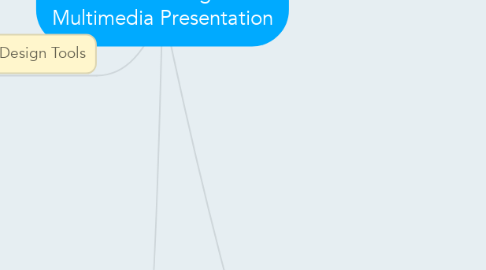
1. Font
1.1. Single size and style that belongs to a typeface family
1.2. - Font styles - Font terminology - Cases
1.2.1. Font Styles : - Boldface - Italic - Underlining - Outlining
1.2.2. Font Terminology : - Baseline - Cap height - X-height - Ascenders/Descenders - Kerning - Tracking
2. Bitmaps font and Vector font
2.1. Bitmaps
2.1.1. - File size increases as more sizes are added - Require a lot of memory - Non-scalable
2.2. Vector
2.2.1. - File size is much smaller than bitmaps - TrueType, OpenType and PostScript are vector font formats
3. Rasterization
3.1. Process of converting text from a vector description to a raster or bitmap description
3.2. Resized bitmapped images are called jaggies
4. Font Editing and Design Tools
4.1. - Fontographer - HyperText - HyperMedia
4.1.1. Fontographer : - specialized graphics editor - Windows and Mac compatible - used to develop PostScript, TrueType, and OpenType fonts
4.1.2. HyperText : - text that contains links to other texts - subset of HyperMedia - Invented by Ted Nelson in 1965
4.1.3. HyperMedia : - not constrained to be text-based - include other media such as graphic and images or media
5. Hypermedia Structures
5.1. - Links - Nodes - Anchors
5.1.1. Links : - connections between conceptual elements - navigation pathways and menus
5.1.2. Nodes : - accessible topics, documents, messages and content elements - form the backbone of a knowledge access system together with links
5.1.3. Anchors : - defines as the reference from one document to another document, image, sound, or file on the Web
6. Typeface
6.1. graphic characters with many type of sizes and styles
7. Text Elements
7.1. - Menus for navigation - Interactive buttons - Fields for reading - HTML documents - Symbols and icons
7.1.1. Menu : navigates through content using a menu
7.1.2. Interactive buttons : clickable object that executes a command when activated
7.1.3. Fields for reading states that reading in hard copy is better than soft copy
7.1.4. Symbols : represents products or ideas Icons : represents objects and processes
7.1.5. HTML as the standard markup language
8. Images
8.1. Still Images : - Bitmap (raster) - Vector-drawn graphics
8.1.1. Bitmap : - derived from the words "bit" that means the simplest element in the digital world, an electronic digit that is either on or off, black or white, true(1) or false(0) - simple matrix of the tiny dots that form an image and are displayed on a screen or printed - various bit and color depths - made up of individual dots or picture elements known as pixels or pels - photo-realistic images - complex drawings requiring fine detail
8.1.1.1. Advantages : - can have different textures on the drawings, detailed and comprehensive
8.1.1.2. Disadvantages : - Large file size - Not easy to make modification to objects/drawings - Resizing a bitmapped image requires either duplicating pixels - Graphics become "blocky" when the size is increased
8.1.2. Vector-drawn graphics : - Computer-aided design (CAD) programs needed by architects and engineers - Graphic artists designing for the print media - 3-D animation programs - changes of position, rotation and shading of light - Applications requiring drawing of graphic shapes
8.1.2.1. Advantages : - less memory space - download faster and draw faster than bitmaps - easy to edit the drawing
8.1.2.2. Disadvantages : - Objects/drawings cannot have texture - cannot be used for photorealistic images
8.2. Texture
8.2.1. - refers to the properties held and sensations caused by the external surface of objects received through the sense of touch - the feel of a surface or a fabric (smooth texture)
8.3. 3-D drawing
8.3.1. - Daz3D - Form*Z - NewTek's Lightwave - Autodesk's Maya - Trimble's SketchUp
8.3.2. Features : - Modeling : Place all elements into 3-D space - Extrusion : The shape of a plane surface extends some distance - Lathing : A profile of the shape is rotated around a defined axis
8.4. Rendering
8.4.1. - Use of intricate algorithms to apply user-specified effects - Takes many hours for a single image
8.5. Color and Palettes
8.5.1. - Additive color - Subtractive color
8.5.1.1. Additive color : - color is created by combining light sources in three primary colors (red, green, blue (RGB)) - TV and computer monitors use this method
8.5.1.2. Subtractive color : - color is created by combining colored media such as paints or ink - colored media absorb or subtract some parts of the color spectrum of light and reflect the others back to the eye - process used to create color in printing - printed page consists of tiny halftone dots of three primary colors : cyan, magenta, and yellow (CMY)
8.5.2. Dithering
8.5.2.1. - digitised images that are 24 bit and 16 million colors in depth - image is transformed for display in the lesser color environment if the display system has less than 16 million colors (color dithering) - used mathematical algorithm
8.6. File Type used
8.6.1. Macintosh formats : - PICT format - PICT is developed by Apple
8.6.2. Windows formats : - DIB (device-independent bitmaps) or BMP format
8.6.3. Cross-platform formats : - JPEG, GIF, PNG format
8.6.3.1. JPEG : - Commonly used standard method of compression for photographic images - Support a maximum of 16.7 million colors - Lossy compression technique - Degradation of image is possible - No transparency - No animation
8.6.3.2. GIF : - 8-bit per pixel, bitmap image format commonly used by the world wide web - Lossless compression technique - Image can have transparent portion - Animation possible
8.6.3.3. PNG (Portable Network Graphic) - Supports more than 16.7 million colors - Lossless Compression Technique - Image can have transparent portion - No animation
8.7. Image File Compression
8.7.1. Lossless compression
8.7.1.1. every single bit of data remains after uncompression. All information restored
8.7.2. Lossy compression
8.7.2.1. reduce file by permanently eliminating certain information

